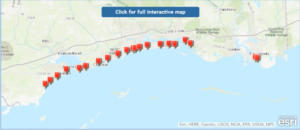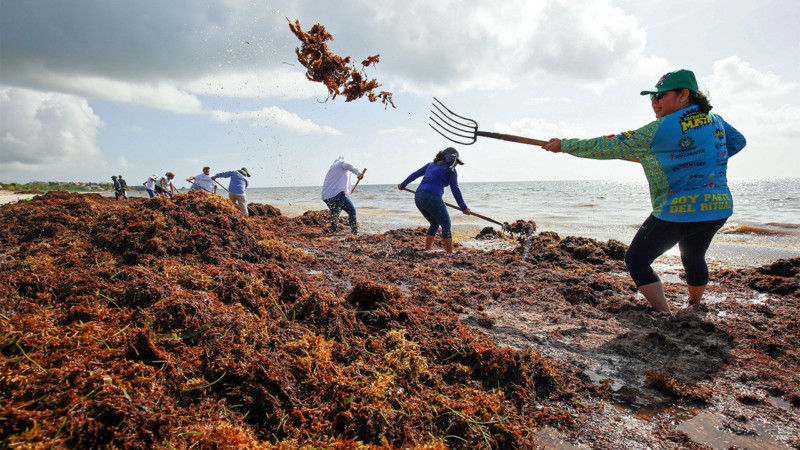Southern beaches are taking a brutal beating from Mother Nature. Some would say from humankind itself. No matter what side of the fence you sit on global warming, one this is obvious : Our Southern beaches are suffering both naturally and also monetarily.
Mississippi Closes 21 Beaches As of 7/7/19
According to the Mississippi Department of Environmental Quality said water at 21 beaches are closed to the public due to blue-green Harmful Algal Bloom, or HAB. MDEQ said fish and seafood from the closed areas should be avoided.
 MDEQ advises people, and their pets, to avoid water contact such as swimming or wading because exposure to the blue-green HAB can be harmful. The algae can cause rashes, stomach cramps, nausea, diarrhea and vomiting. MDEQ advises that those exposed wash with soap and water and to not eat fish or any other seafood taken from affected areas. The closures refer to water contact and do not prohibit use of the sand portion of a beach.
MDEQ advises people, and their pets, to avoid water contact such as swimming or wading because exposure to the blue-green HAB can be harmful. The algae can cause rashes, stomach cramps, nausea, diarrhea and vomiting. MDEQ advises that those exposed wash with soap and water and to not eat fish or any other seafood taken from affected areas. The closures refer to water contact and do not prohibit use of the sand portion of a beach.
HAB can cause rashes, stomach cramps, nausea, diarrhea and vomiting.
Destin and Panama City Beach Have Jellyfish and Bacteria Problems
In the past week 2 separate problems presented themselves in the Florida Gulf. In Destin, jellyfish warnines remain prevalent as the purple marine pest flag has flown for the past few days.
In Panama City the Florida Department of Health in Bay County issued the advisory for Panama City Beach Beach Access No. 41 SP 5. This is located at 1211 Front Beach Road.
The alert comes after the presence of high levels of enteric bacteria was reported. Enteric bacteria normally inhabit the intestinal tract of humans and animals and exposure to it can cause disease, infections or rashes.
No beach closures are in effect for these areas.
Seaweed Invades Southern Florida
Chuanmin Hu, a #USF College of #MarineScience professor specializing in optical #oceanography, said residents of the #Keys and #Florida east coast should not expect relief from sargassum any time soon. https://t.co/6kQIn6agBY @KeyWestCitizen pic.twitter.com/wQtGfEr45W
— USF Marine Science (@USFCMS) June 5, 2019
Meanwhile, in places like Miami and the Keys, a different threat with both positive and negative implications has found it’s way to Florida, Mexican and Caribbean beaches: sargassum seaweed.
Scientists are quick to point out that sargassum is a vital habitat for marine animals. On a recent trip to Bermuda to scout out sargassum, a photographer and a writer with National Geographic counted more than 3,000 sea creatures visible to the naked eye in one soccer-ball sized clump of the seaweed.
All those critters become an all-you-can-eat seafood buffet for birds and other shore animals when sargassum hits land.
However, there is a negative side as too much of a good thing is usually harmful. Dead sealif is being seen washing up on shores. And, cleanup is difficult, because it disturbs important turtle nesting areas.
Tourists report a rotten egg smell and annoyance.
The effects on tourism so far are minimal. However, if it continues, the impact will be felt.
And, also, the NWS is monitoring a possible tropical formation in the Gulf this week.Best advice we can give y’all? Know before you go!





